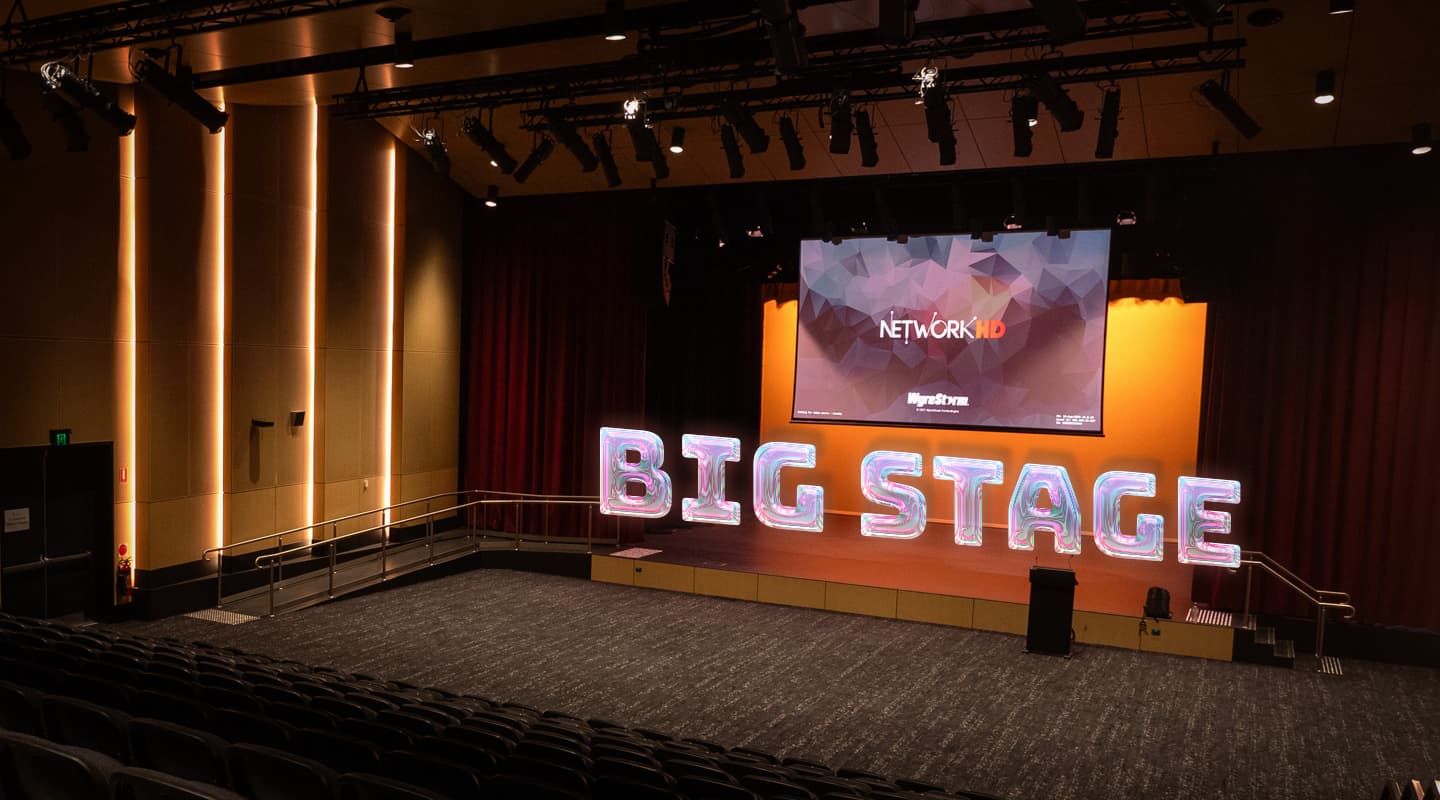
AV Case Study: Bentleigh Secondary College Performing Arts Precinct
This new Performing Arts Precinct brings the power, control and flexibility of pro-grade AV and staging to surburban high school students and staff.
Bentleigh Secondary College hit the jackpot with its new Performing Arts Precinct. It’s a doozy. It’s the sort of facility that might lead the sizzle video of a ritzy private school. And you quickly get the feeling that staff are aware they’ve got something pretty special. Head of Performing Arts Denton Delmenico can’t quite believe his luck, while Assistant Principal Schy Prewett (who’s also a drama teacher) can’t wait to see how the new Precinct impacts on the school and its music and performing arts programs. We’ll hear from them a little later.
The technical facilities are impressive. Studio Entertech came in as the theatre consultants while ITE took care of the installation.
It’s an ITE job so you’d be surprised if the project didn’t have an extremely competent stage machinery package – and it does. The rest of the AV is equally capable, combining pro-grade production capabilities with the sort of ease of use you need for Monday morning assembly.
Alex Vandenbossche: “The brief was to create a truly multi-purpose venue for performance. And the AV spec had to reflect that flexibility.”
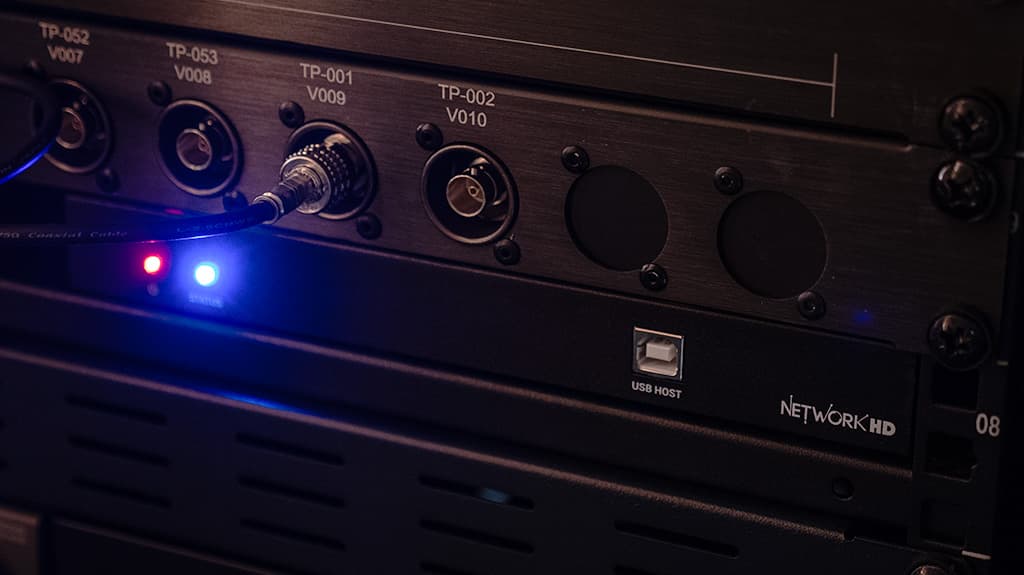
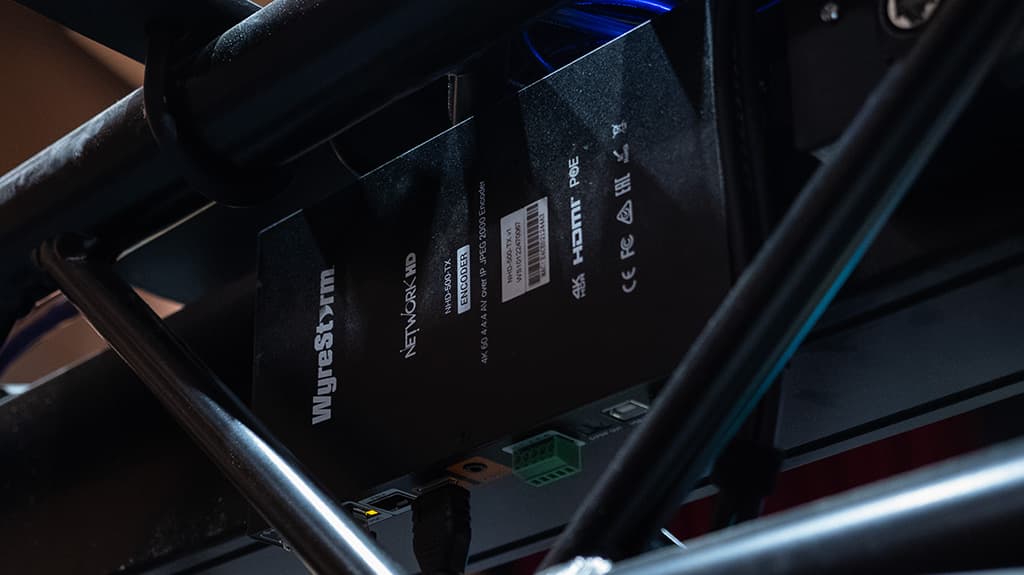
Multiple WyreStorm NetworkHD encoder endpoints take feeds from lectern HDMI inputs, the stage manager’s box, and the AVer PTZ camera. These sources can be distributed to displays throughout the building.
WYRESTORM NETWORKHD: AT THE CORE
AV-over-IP was always going to be the backbone of the system, and WyreStorm’s NetworkHD platform fit the brief – and budget – beautifully.
“WyreStorm allows us to route any source to any display or projector in the venue,” says Vandenbossche. “And it integrates directly with Q-SYS, which we use for all system control. There’s a plug-in available, so from the Q-SYS touchscreen, users can select sources, route video, and control distribution with no need for external switching hardware.”
Multiple encoder endpoints take feeds from lectern HDMI inputs, the stage manager’s box, and the AVer PTZ camera (used primarily for stage replay). These sources can be distributed throughout the building, including to classrooms repurposed as dressing rooms during productions.
“It’s a game changer for us,” adds Prewett. “Our productions might have 100 kids involved. This way students waiting in dressing rooms can see and hear what’s happening on stage in real time. It’s high-quality, and it really improves the performer experience.”

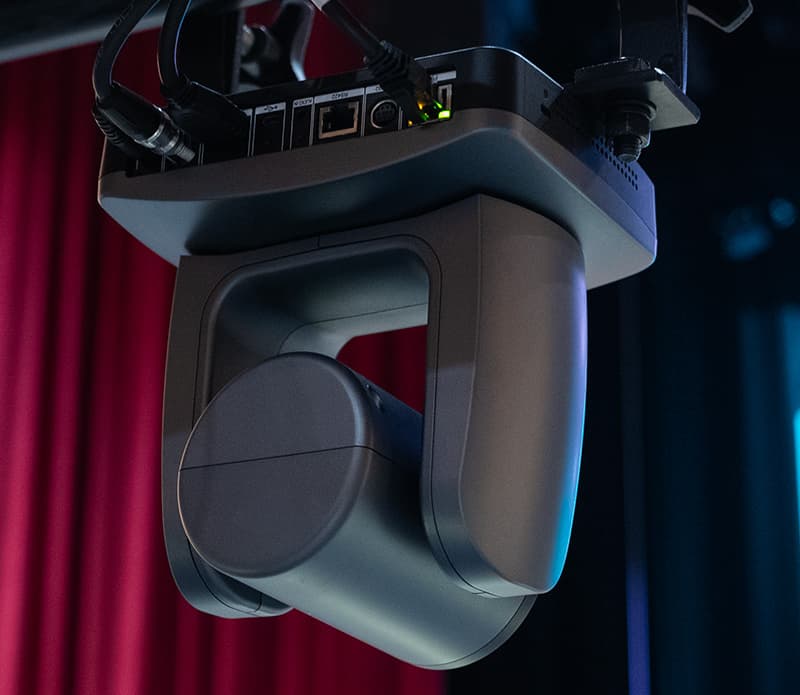
Dual SDI and HDMI outputs make the AVer PTZ cameras a favourite for ITE. That, and reliability.
AVER CAMERAS: A CLASSROOM FAVOURITE
AVer’s PTZ camera offering is another highlight, providing high-quality visuals at a very digestible price point.
“We’re a bit biased towards AVer,” Vandenbossche admits. “They’ve been rock-solid for us. For the price, nothing else comes close. The SDI and HDMI outputs give us flexibility – we can go straight into a WyreStorm encoder, or patch into a vision mixer if someone brings one in. That’s important for production mode.”
Used both as a show relay and for capture, the AVer camera’s integration into the Q-SYS ecosystem allows for remote pan/tilt/zoom control directly from the touchscreen interface. Whether it’s a live show, recording a performance, or streaming into overflow rooms, the camera system earns its keep.
DIGITAL PROJECTION BRIGHTENS THE STAGE
One of the standout elements of the AV fitout is the Digital Projection unit – a high-brightness beast that throws crystal-clear imagery from a considerable distance.
“This was actually my first time working with Digital Projection,” admits Vandenbossche. “The consultant specified it – and I have to say, it’s a great unit. The throw distance is significant, but the brightness and clarity are excellent.”
“It’s so powerful we can run a full lighting rig and still get sharp, saturated visuals on the screen,” adds Prewett. “It means we can use it for visual backdrops, titles, and even abstract scenic elements during plays—and it always looks fantastic.”
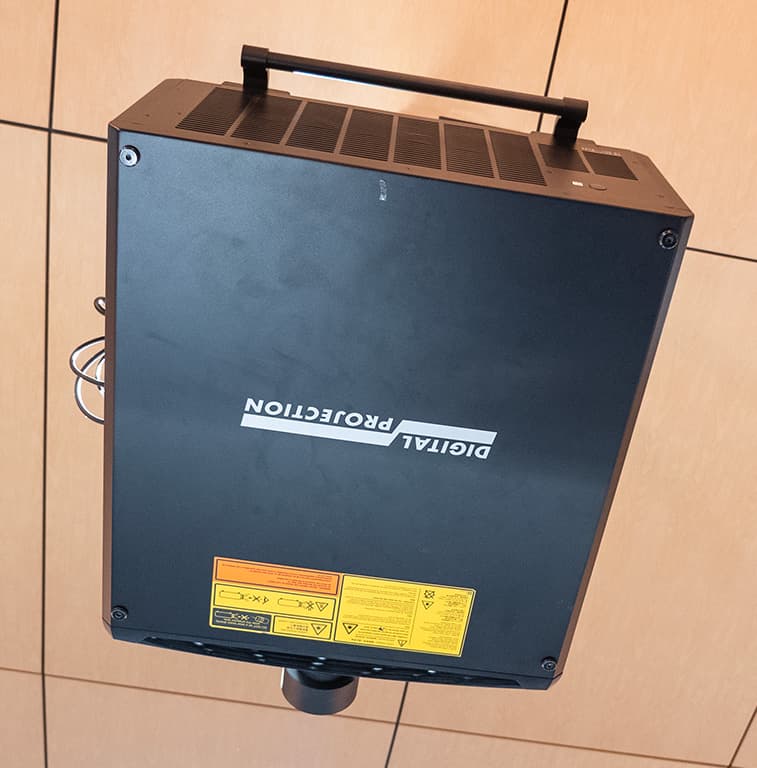
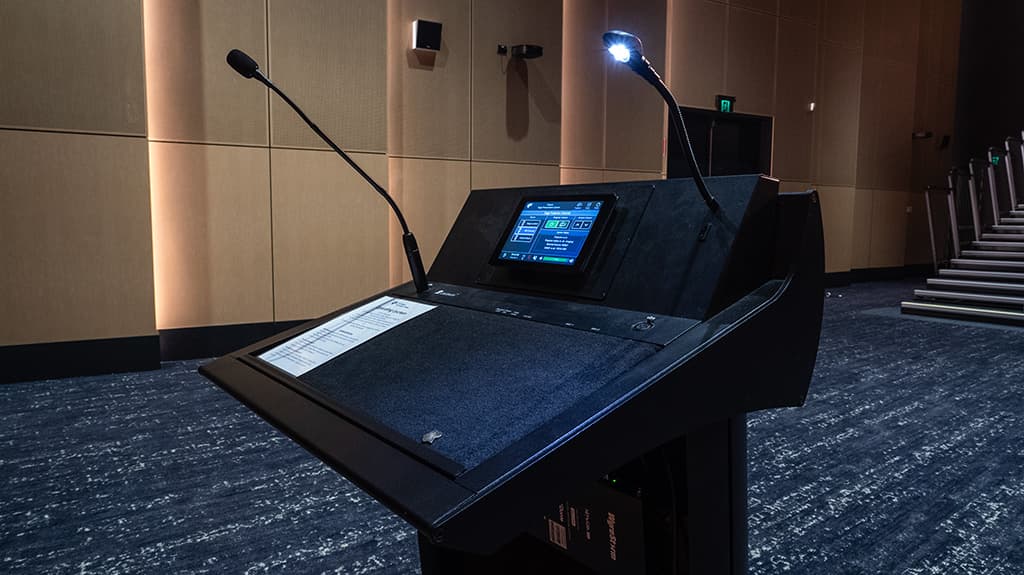
The lectern features Q-SYS control touchpad, Audio-Technica gooseneck mic and a WyreStorm NetworkHD encoder for a laptop HDMI output.
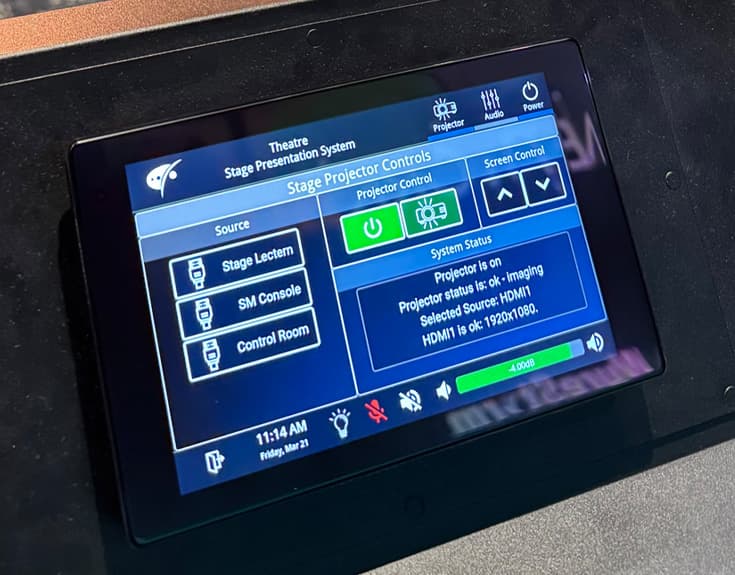
Q-SYS: FLEXIBILITY ON TAP
At the heart of the control system is a Q-SYS Core processor. It manages everything from audio DSP to camera control, projector commands, screen drops, and video routing.
“We designed two modes of operation,” explains Vandenbossche. “In presentation mode, a teacher can walk in, plug in a laptop, drop the screen, and be good to go. In production mode, more advanced functions are unlocked, such as full audio mixing through the Allen & Heath desk, camera patching, and detailed video routing.”
Critically, the system integrates with Dynalite for house lighting, and offers fallback options: “In the unlikely event that Dante fails, we’ve still got analogue paths routed through Q-SYS,” says Vandenbossche. “It’s fully redundant.”
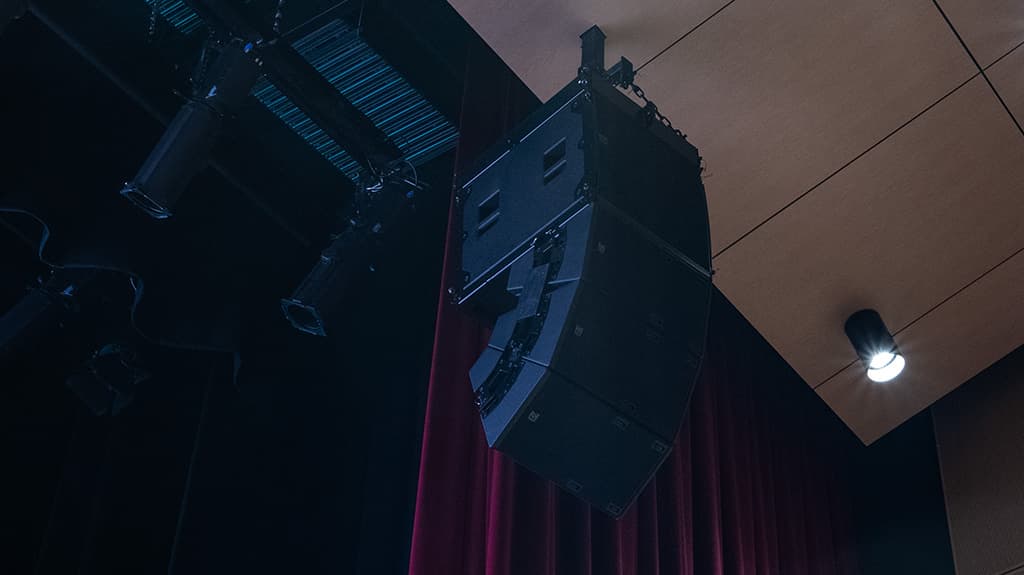
One of the Martin Audio Torus constant curvature arrays.
AUDIO THAT PERFORMS
Audio delivery is courtesy of a Martin Audio Torus system – a constant-curvature array tailored to the room’s geometry.
“It’s not a rock ’n’ roll space,” says Vandenbossche, “but the Martin Audio rig sounds excellent for what it’s intended for. The subs are cardioid to reduce stage spill, and we’ve got QSC amps on Q-LAN to drive it all. Add in some portable QSC K12s, and the venue has heaps of flexibility.”
Monitoring and paging are also handled through Q-SYS, while wireless comms are delivered via a Riedel antenna and a PunQtum master station. “Everything talks to everything,” Vandenbossche adds. “That’s the beauty of networked systems today.”
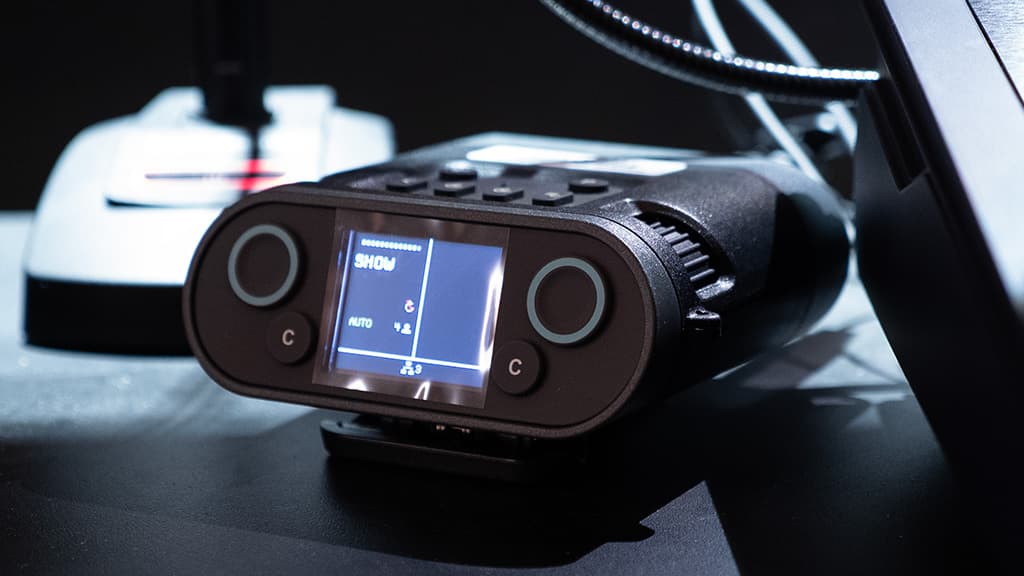
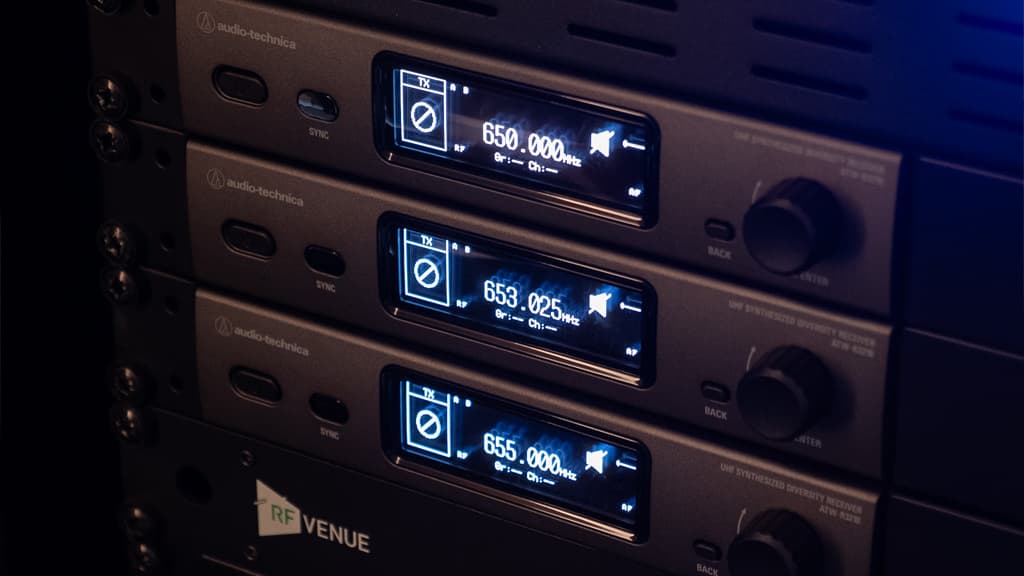
One of the PunQtum comms packs and the Audio-Technica wireless.
EDUCATIONAL VALUE, INDUSTRY STANDARD
Denton Delmenico, Head of Performing Arts, sees the real value of the system in its educational impact.
“Our senior Theatre Studies students are now working in a space that mirrors the professional world,” he says. “They’re learning to use proper control systems, working with real dimmers, patching analogue and digital sources – it’s an enormous step up.”
The lighting rig includes around 40 profiles and 20 Fresnels from the ShowTechnology ShowPro range, plus a motorised curtain and traditional winch bars for hands-on rigging.
“We deliberately didn’t automate everything,” says Vandenbossche. “We want students to get hands-on — focus a light, run a cable, lower a bar. That experience is still relevant.”
ONE SCHOOL, MANY POSSIBILITIES
Whether it’s showcasing a school musical, broadcasting a drama performance to classrooms, or hosting external hirers, Bentleigh’s Performing Arts Precinct is built to adapt.
“This facility opens up possibilities,” Delmenico says. “It’s not just for performance. It’s a teaching tool. And from what I’ve seen, no other public school has anything quite like it.”
For Schy Prewett, the investment is already paying dividends: “It’s professional, but still accessible. That’s the sweet spot. And it’s what makes this space so special for our students.”
Installation Theatrical Engineering: www.ite.net.au
Studio Entertech: www.entertech.com.au
Amber Technology (Digital Projection, WyreStorm, AVer): ambertech.com.au
TAG (Q-SYS, Martin Audio): tag.com.au

STAGE MACHINERY
Zero Fleet Hoist: Bentleigh’s PAC features a Zero Fleet Hoist – a rarity in school theatres. “It’s a massive drum system where the wires roll side by side, not over each other,” explains Alex Vandenbossche from Installation Theatrical Engineering (ITE). “That allows for higher speeds and heavier loads—something you won’t find in most school installs.”
Motorised Bars: With modern safety regs prohibiting staff from using ladders unless they’re classified as maintenance personnel, motorised rigging is no longer a luxury. “We always recommend motorised bars,” says Vandenbossche. “They’re a practical response to changing safety requirements.”
Custom Control Systems:
ITE builds all stage machinery control panels in-house, tailored to each venue. “Our panels house all the motor drives, with braking resistors up top to dissipate heat,” explains Vandenbossche. “In schools, we usually keep it simple – one bar moving at a time, pendant control, positional memory, variable speed. It’s all designed to be safe, intuitive, and rock-solid.”
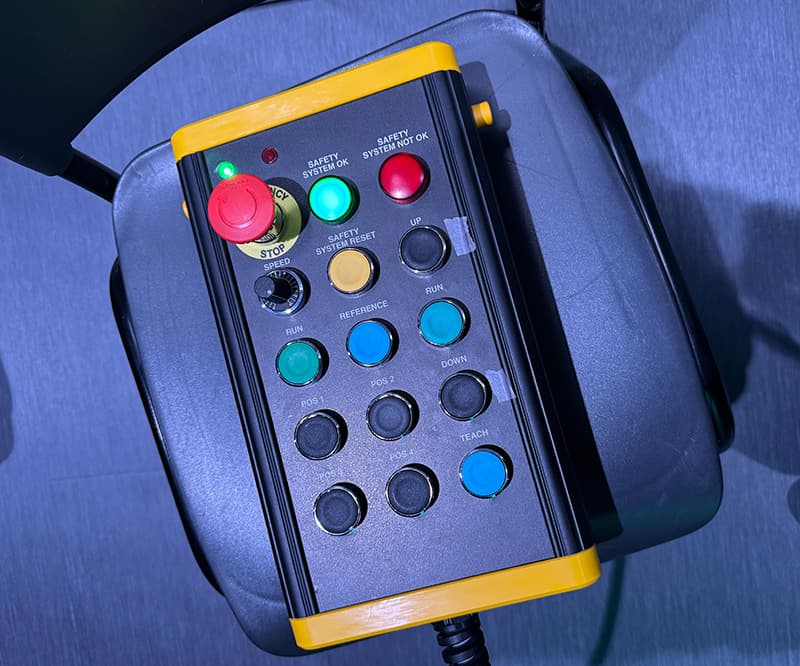





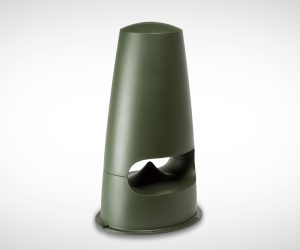
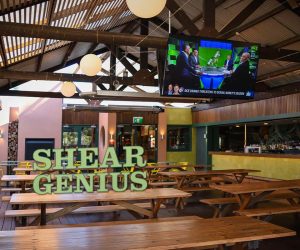
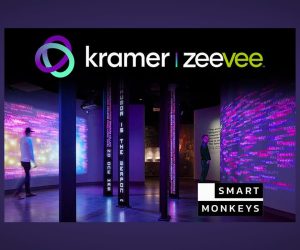
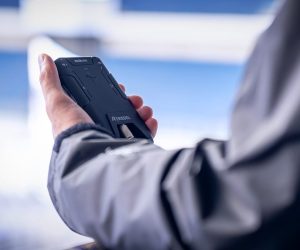
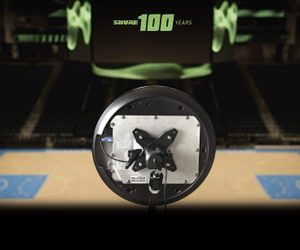

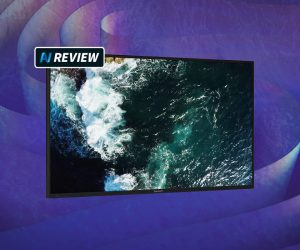
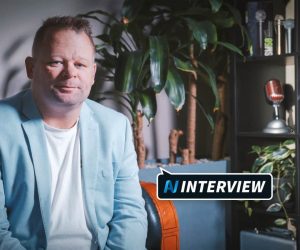
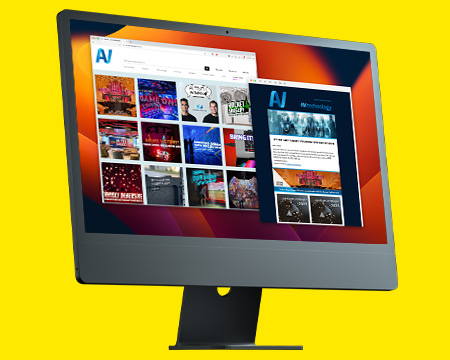

RESPONSES